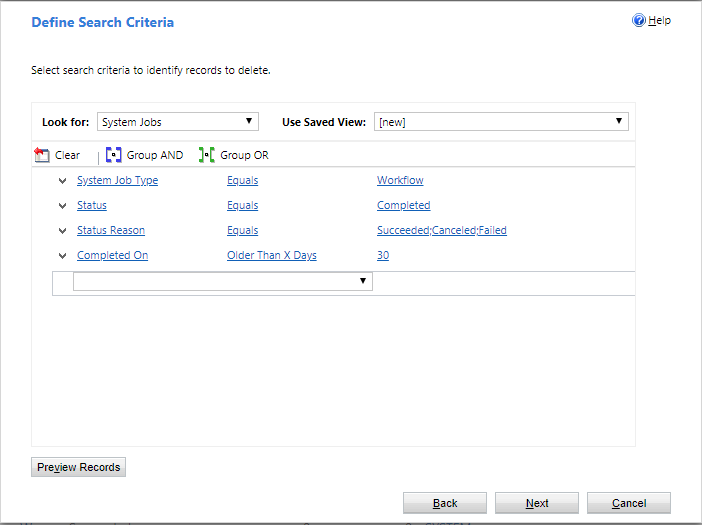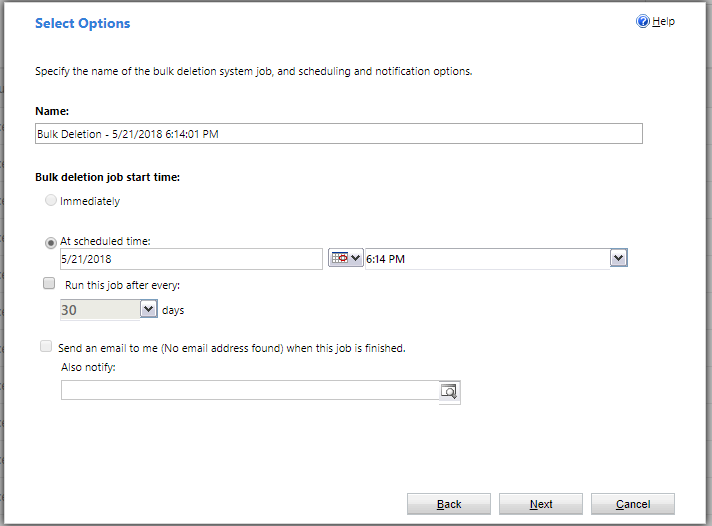Note
Access to this page requires authorization. You can try signing in or changing directories.
Access to this page requires authorization. You can try changing directories.
To monitor and manage processes, you must locate the process, evaluate the status, and perform any actions necessary to address problems.
Monitoring real-time workflows and actions
Real-time workflows and actions don't use System Job rows because are displayed to the user in the application with the heading Business Process Error.
There's no log for successful operations. You can enable logging for errors by checking the Keep Logs for workflow jobs that encountered errors option in the Workflow Log Retention area at the bottom of the Administration tab for the process.
To view the log of errors for a specific process, open the real-time workflow or action definition and go to the Process Session tab. This log only shows errors logged for this process.
If you want a view of all the errors for any process, go to Advanced Find and create a view showing errors on the process session table.
Status of real-time workflow processes
When you view a list of real-time workflow processes, any individual process can have one of the following State and Status Reason values:
| State | Status Reason |
|---|---|
| Ready | Waiting for Resources |
| Suspended | Waiting |
| Locked | In Progress Pausing Canceling |
| Completed | Succeeded Failed Canceled |
Deleting process log rows
If your organization uses background workflows or business process flows that run frequently, the amount of process log rows can become large enough to cause performance issues as well as consume significant amounts of storage. To delete process log rows not removed sufficiently by one of the standard bulk row deletion jobs, you can use the bulk delete system jobs feature to create a custom bulk row deletion job.
Go to the Power Platform admin center, and open the environment you want.
Go to Settings > Data Management > Bulk deletion.
From the Bulk Record Deletion area, select New.
On the Bulk Deletion Wizard start page, select Next.
In the Look for list, select System Jobs.
The following conditions are used to create a bulk row deletion job to delete process log rows:
System Job Type Equals Workflow: This targets real-time workflow rows.
Status Equals Completed: Only completed workflows are valid to run the job against.
Status Reason Equals Succeeded: Delete successful, canceled, and failed jobs.
Completed On Older than X Days 30: Use the Completed On column to only delete real-time workflow process log rows that are older than 30 days.

Select Next.
Set the frequency that your bulk delete job runs. In this example, a recurring job is set to run on May 14, 2024, and every 30 days thereafter.

Note
Performing an immediate synchronous bulk delete of the rows by selecting the Immediately option is deprecated and no longer available for use.
Select Next, and then select Submit.